Investment in
education : Key to
higher growth
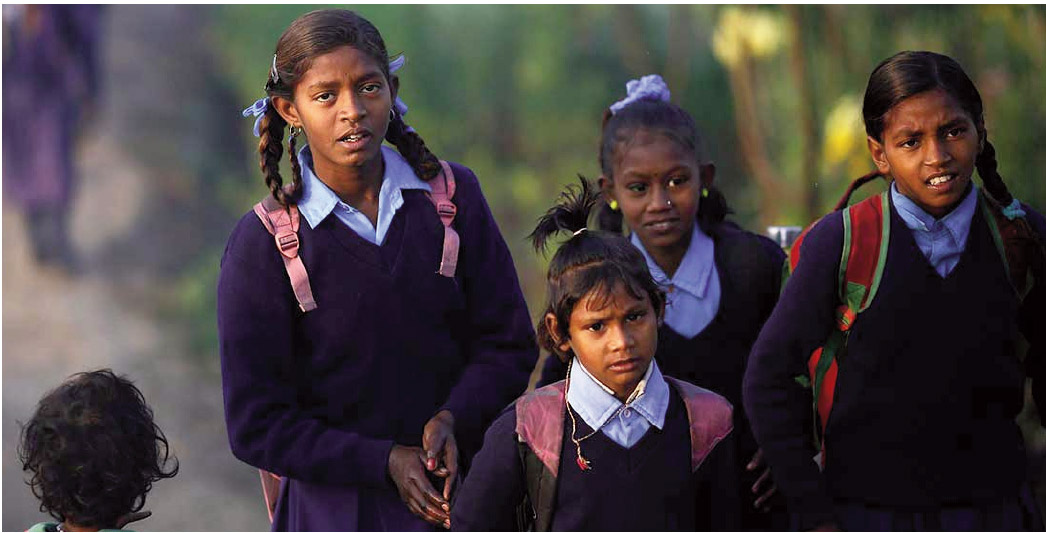
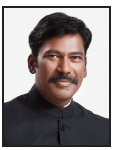 Narendra Ram
Narendra Ram
Education is the manifestation of
hidden perfection
…. Swami Vivekananda
India has been known to have
the greatest cultural heritage in
providing the best education to
the humanity since the times of
Taxila, Nalanda and
Vikramshila.
In 1944, the Government of British
India presented a plan, called the
Sergeant Scheme for educational
reconstruction of India, with a goal of
producing 100 per cent literacy in the
country within 40 years, i.e. by 1984.
In post-Independence the provision
of universal and compulsory
education for all children in the age
group of 6–14 has been a cherished
national ideal and given overriding
priority under Article 45 of the
Constitution.
The literacy rate grew from 18.33
per cent in 1951, to 28.30 per cent in
1961, 34.45 per cent in 1971, 43.57 per
cent in 1981, 52.21 per cent in 1991,
64.84 per cent in 2001 and 74.04 per cent in 2011. During the same period,
the population grew from 361 million
to 1,210 million.
Key challenges to be on par with the
world's leading countries in the literacy
rate:
1) Literacy initiatives
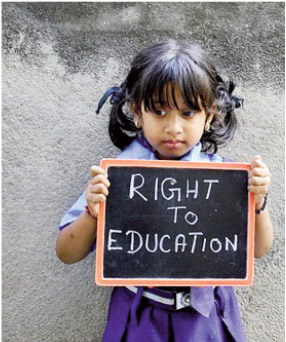 As per Professor Amartya Sen, it is
not the nature of the government that
is the main factor in China's success
but its investment in health and
education that provided fuel to its
explosive growth. He says India has
under-invested in these key areas and
hence its economic growth is poorly
supported by quality human capital.
As per Professor Amartya Sen, it is
not the nature of the government that
is the main factor in China's success
but its investment in health and
education that provided fuel to its
explosive growth. He says India has
under-invested in these key areas and
hence its economic growth is poorly
supported by quality human capital.
Professor Sen was critical of the
suggestion that countries could grow
economically first and then invest in
education later, saying that it was the
reverse that is true.
He supported his claim bringing
historical evidence of Japan's rapid
growth since the second decade of the
20st century being driven by its
investment in health and education.
More recently, similar investment by
Korea and the South East Asian
countries provided impetus to
economic growth in these countries.
2) Reach and presence
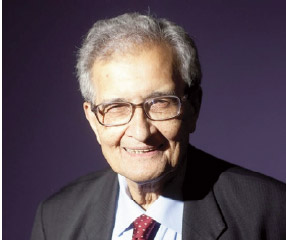 Amartya Sen
Even today there are innumerable
number of remote villages across our
country which are deprived of having
school education. Hence it is
extremely critical to invest on
augmenting the number of both
primary and secondary government
schools with remarkable proliferation
in the coming years. There are 22
major languages in India, written in 13
different scripts. At the same time,
there must be a thorough survey done
on understanding the complexities of
promoting vernacular schools in the
places where vernacular languages are
only spoken with no written
communication.
Amartya Sen
Even today there are innumerable
number of remote villages across our
country which are deprived of having
school education. Hence it is
extremely critical to invest on
augmenting the number of both
primary and secondary government
schools with remarkable proliferation
in the coming years. There are 22
major languages in India, written in 13
different scripts. At the same time,
there must be a thorough survey done
on understanding the complexities of
promoting vernacular schools in the
places where vernacular languages are
only spoken with no written
communication.
3) Teachers' development
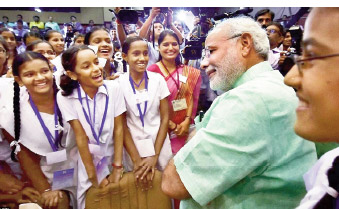 The Narendra Modi
government is
passionate about
education, although it
has been censured at
times for trying to
'Saffronise' learning
It is also extremely critical for
government to have recurring training
programmes for teacher development
and also special incentives for the teachers who work in remote locations
to encourage more teachers to prefer
remote location schools.
The Narendra Modi
government is
passionate about
education, although it
has been censured at
times for trying to
'Saffronise' learning
It is also extremely critical for
government to have recurring training
programmes for teacher development
and also special incentives for the teachers who work in remote locations
to encourage more teachers to prefer
remote location schools.
4) Technology for better education
Though the government has
initiated many programmes like epathasala
, from black board to Digital
board etc to bring technology enabled
education , parallelly the government
should concentrate on improving the
beneficiaries of the same at a rapid
rate.
5) Girl Child education
If a woman is educated, her entire
family gets educated. So it goes
without saying that the government
should focus exclusively on promoting
girl child education in rural segments
by providing them special privileges on
higher education.
6) Vocational Training education
It is extremely important that
Government should open more ITI
and Polytechnic colleges in the rural
segment, there by the remote villages
can be hopeful about employment
opportunities. This will kindle
enthusiasm to pursue the next level of
education after their schooling.
Commendable steps
Having understood the challenges
to improve the literacy ratio, the
existing government's endeavour to
improve the education sector is worth
appreciating.
The following are the few initiatives
the government has taken to improve
the education sector. However, it will
be more commendable if
implementation is robust.
● In order to boost the Skill
India Mission, two new schemes, Skills
Acquisition and Knowledge Awareness
for Livelihood Promotion (SANKALP)
and Skill Strengthening for Industrial
Value Enhancement (STRIVE), have
been approved by the Cabinet
Committee on Economic Affairs
(CCEA), Government of India, with an outlay of Rs 6,655 crore (US$ 1.02
billion) . It will be supported by the
World Bank.
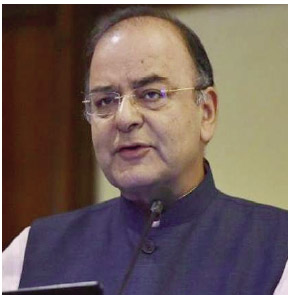 Arun Jaitley
● The Government of India has
signed a Financing Agreement with the
World Bank for IDA credit of US$ 125
million for the "Skills Strengthening for
Industrial Value Enhancement
Operation (STRIVE) Project".
Arun Jaitley
● The Government of India has
signed a Financing Agreement with the
World Bank for IDA credit of US$ 125
million for the "Skills Strengthening for
Industrial Value Enhancement
Operation (STRIVE) Project".
● NITI Aayog is launching the
Mentor India Campaign which will
bring leaders and students together at
more than 900 Atal Tinkering Labs in
India, as part of the Atal Innovation
Mission. Moreover, it has selected
1,500 additional schools across India
for establishing Atal Tinkering Labs
(ATLs) under the Government's
flagship programme, Atal Innovation
Mission (AIM).
● The Government of India will
spend around Rs 20,000 crore (US$
3.10 billion) to build six new Indian
Institutes of Technology (IITs) by
March 2024, of which Rs 7,000 crore
(US$ 1.08 billion) will be spent by
March 2020.
● The Government of India has
approved an all-time record of over
4,000 post-graduation (PG) medical
seats to be added in various medical
colleges and hospitals for the
academic session 2017-18, said Mr J P
Nadda, Union Minister of Health and
Family Welfare.
● The Union Cabinet chaired
by Prime Minister Narendra Modi has
approved 'Pradhan Mantri Gramin
Digital Saksharta Abhiyan'
(PMGDISHA) to make 60 million rural
households digitally literate. The
outlay for this project is Rs 2,351.38
crore (US$ 353.70 million) to usher in
digital literacy in rural India by March,
2019.
● The Prime Minister has
launched the Skill India initiative –
'Kaushal Bharat, Kushal Bharat'. Under
this initiative, the government has set
On the education front,
Finance Minister Arun
Jaitley has announced
setting up of Ekalavya
Model Residential School
on par with Navodaya
Vidyalayas to provide the
best quality education to
tribal children in their
own environment by
2022. In every block with
more than 50 per cent ST
population and at least
20,000 tribal persons,
special facilities will be
created for preserving
local art and culture,
besides providing
training in sports and
skill development.
itself a target of training 400 million
citizens by 2022 that would enable
them to find jobs. The initiatives
launched include various programmes
like: Pradhan Mantri Kaushal Vikas
Yojana (PMKVY), National Policy for
Skill Development and
Entrepreneurship 2015, Skill Loan
Scheme, and the National Skill
Development Mission.
● The National Skill
Development Mission has created an
elaborate skilling eco-system and
imparted training to 7.6 million youth
since its launch in 2015 and the
government now plans to set up 1,500
Multi Skill Training Institutes across the
country.
● On the education front,
Finance Minister Arun Jaitley
announced setting up of Ekalavya
Model Residential School on par with
NavodayaVidyalayas to provide the
best quality education to tribal
children in their own environment by
2022. In every block with more than 50
per cent ST population and at least
20,000 tribal persons, special facilities
will be created for preserving local art
and culture besides providing training
in sports and skill development.
● To step up investments in
research and related infrastructure in
premier educational institutions,
including health institutions, a major
initiative named ''Revitalising
Infrastructure and Systems in
Education (RISE) by 2022'' with a total
investment of Rs.1,00,000 crore in next
four years has been announced. Jaitley
has said that a survey of more than 20
lakh children has been conducted to
assess the status on the ground, which
will help in devising a district-wise
strategy for improving quality of
education.
● To improve the quality of
teachers an integrated B.Ed.
programme for teachers will be
initiated. Jaitley says that the
Government would launch the ''Prime
The National Skill
Development Mission
has created an elaborate
skilling eco-system and
imparted training to 7.6
million youth since its
launch in 2015. The
government now plans
to set up 1,500 Multi -
Skill Training Institutes
across the country.
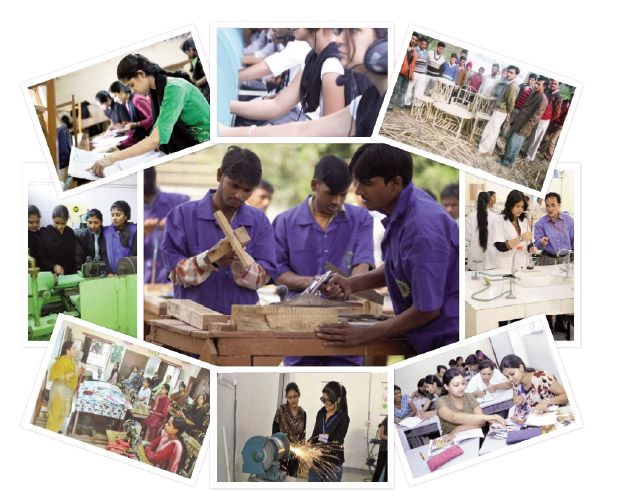 Minister's Research Fellows (PMRF)''
Scheme this year. Under this, 1,000
best B.Tech students will be identified
each year from premier institutions
and provide them facilities to do Ph.D
in IITs and IISc, with a handsome
fellowship. Allocation on National
Social Assistance Programme this year
has been kept at Rs. 9975 crore.
Minister's Research Fellows (PMRF)''
Scheme this year. Under this, 1,000
best B.Tech students will be identified
each year from premier institutions
and provide them facilities to do Ph.D
in IITs and IISc, with a handsome
fellowship. Allocation on National
Social Assistance Programme this year
has been kept at Rs. 9975 crore.
Road ahead
In 2030, it is estimated that India's
higher education will:
● Adopt transformative and
innovative approaches in higher
education.
● Have an augmented Gross
Enrolment Ratio (GER) of 50 per cent
● Reduce state-wise, gender
based and social disparity in GER to 5
per cent.
● Emerge as a single largest
provider of global talent, with one in
four graduates in the world being a
product of the Indian higher education
system.
● Be among the top five
countries in the world in terms of
research output with an annual R&D
spent of US$ 140 billion.
● Have more than 20
universities among the global top 200.
Conclusion
Last but not the least, we have no
dearth of scholars who can enrich the
education sector to enviable heights. It
is suggested that like the Swachcha
Bharat, literacy also should be
promoted exclusively in remote
villages by different NGOs and the
Government of India in the name of
"Saaksharata Bharat" . To discuss the
strategy a National Debate should be
called for by the government, inviting
distinguished scholars across the
country.
Let me recall the words of Swami
Vivekananda
"Education is not filling the mind
with lot of facts. But getting mastery of
one's own Mind ".


 Narendra Ram
Narendra Ram




 Amartya Sen
Amartya Sen The Narendra Modi
government is
passionate about
education, although it
has been censured at
times for trying to
'Saffronise' learning
The Narendra Modi
government is
passionate about
education, although it
has been censured at
times for trying to
'Saffronise' learning Arun Jaitley
Arun Jaitley